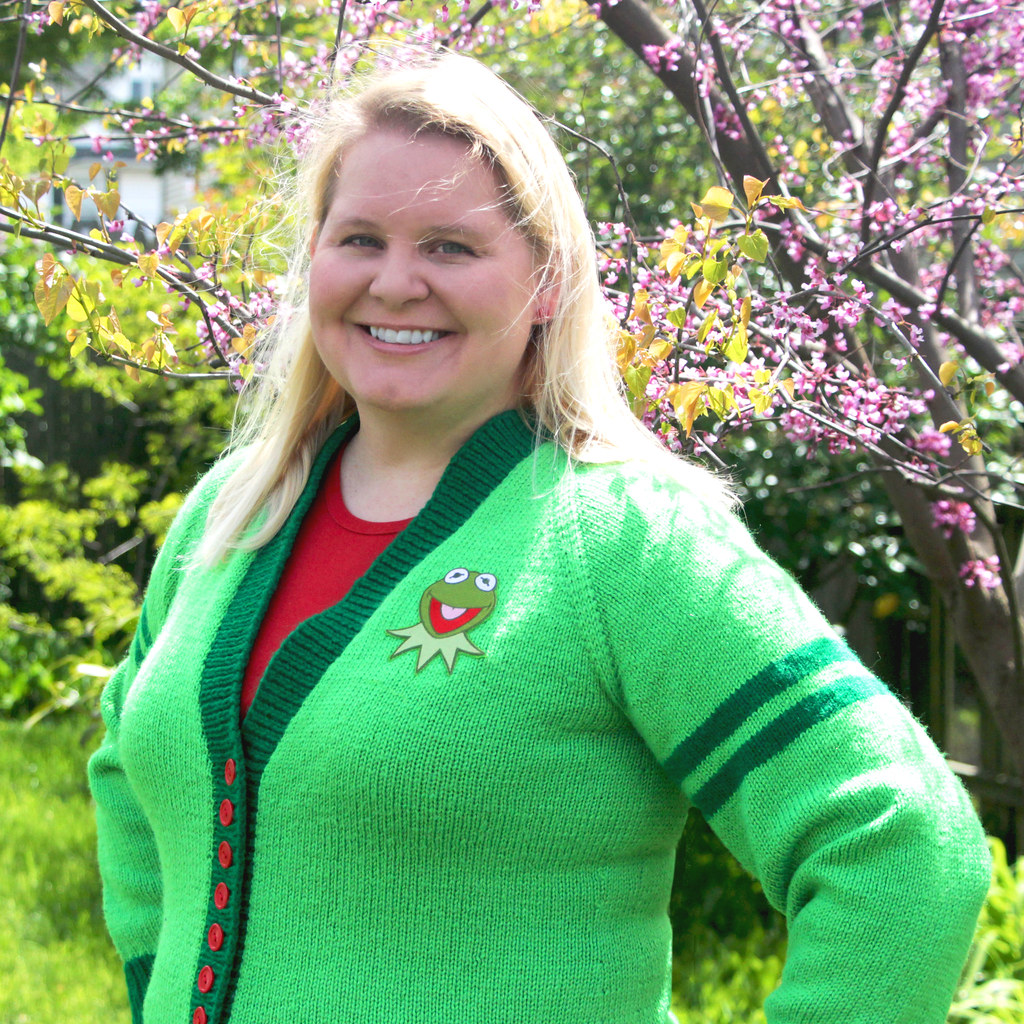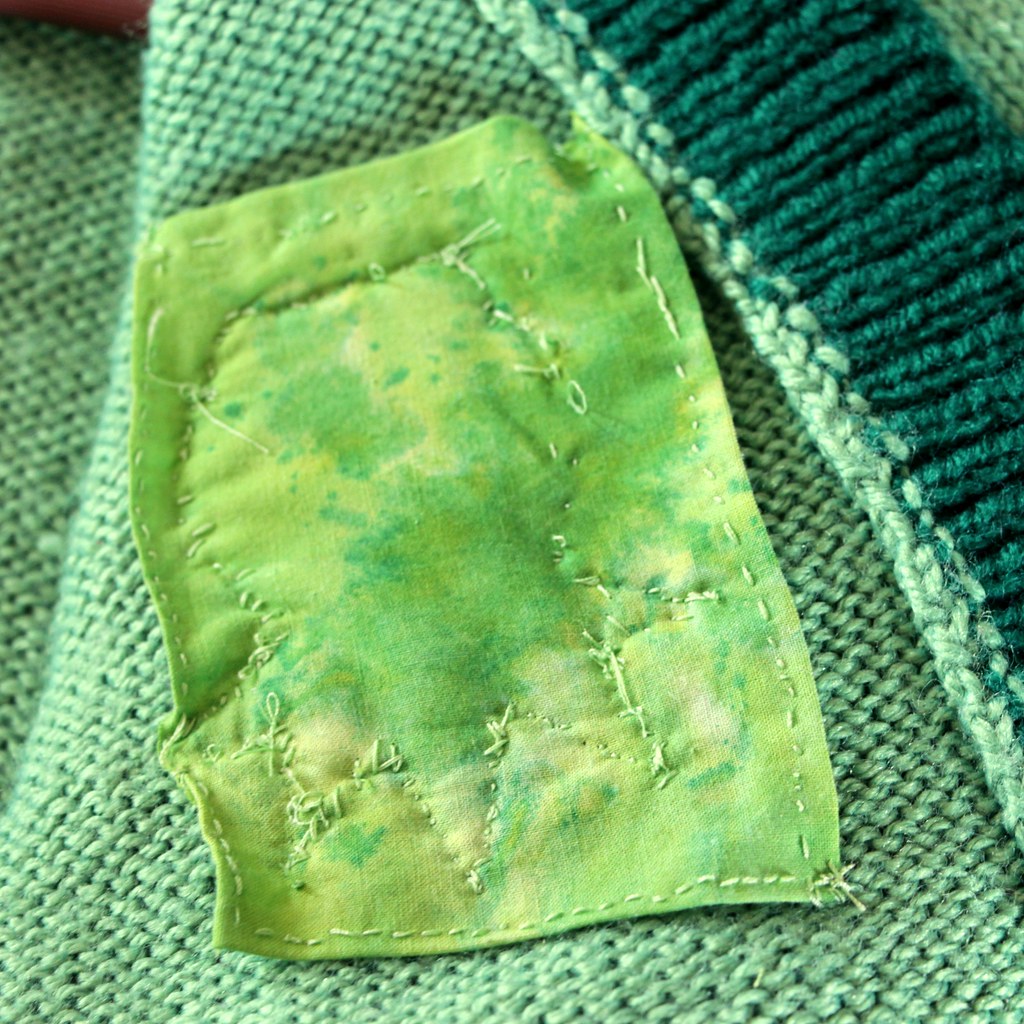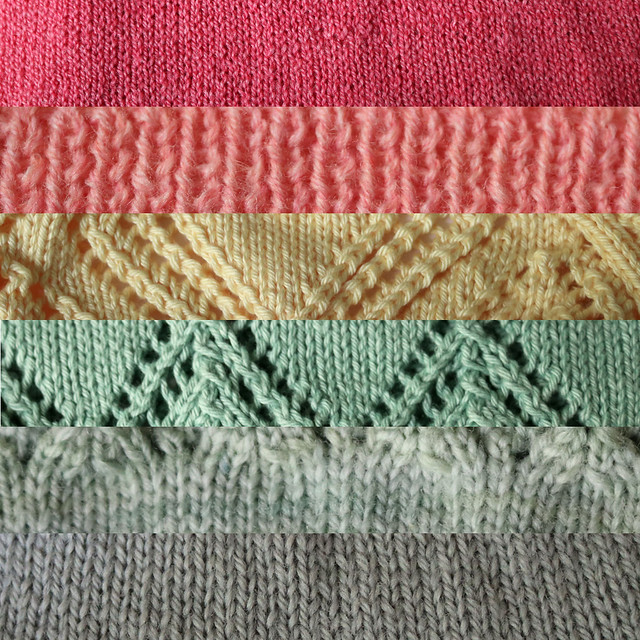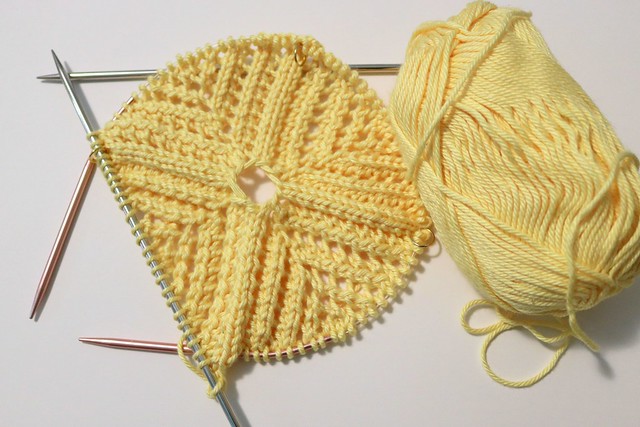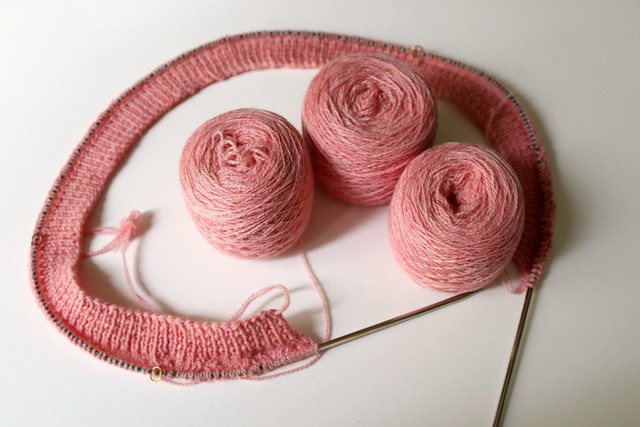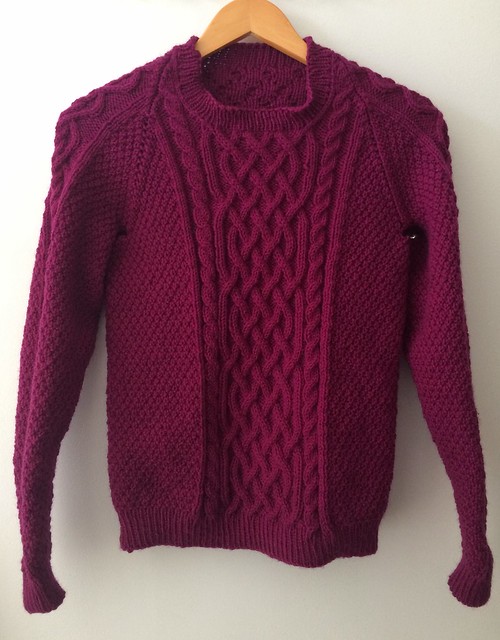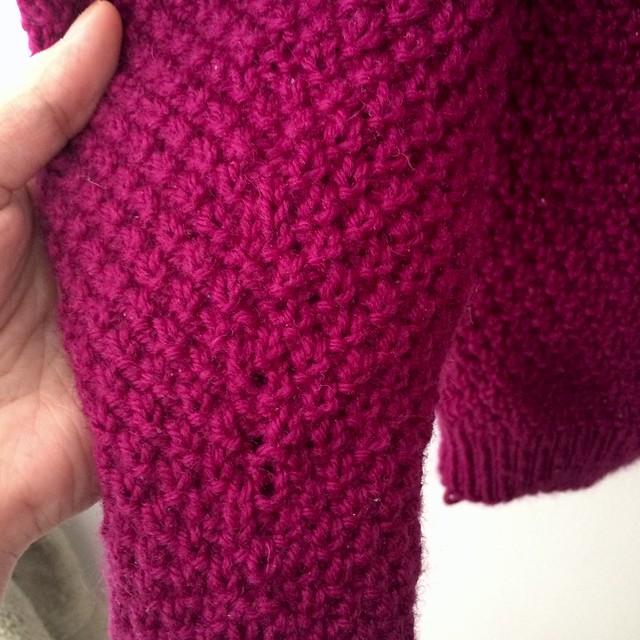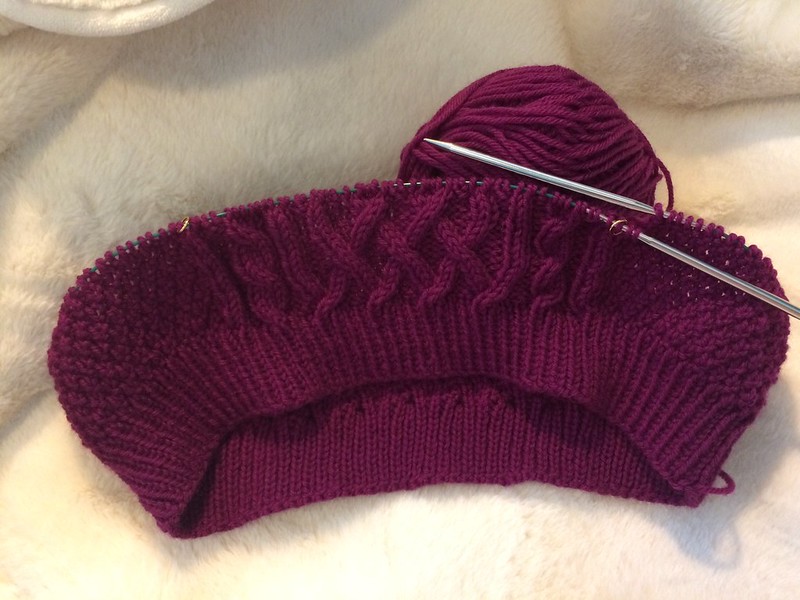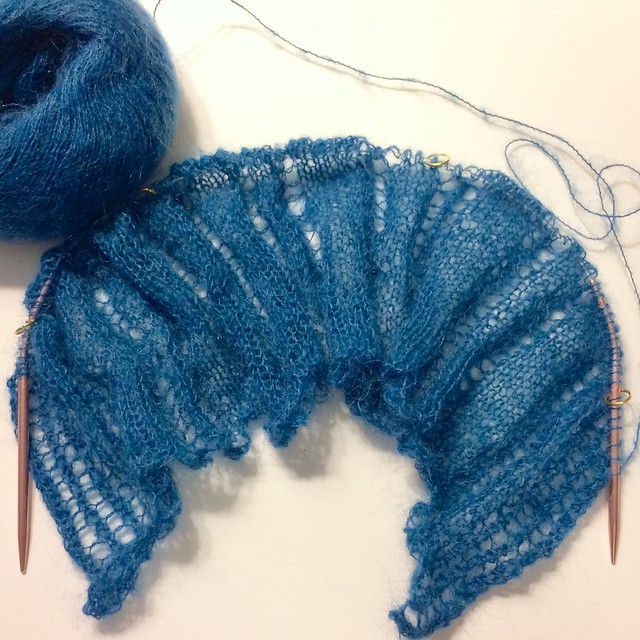I have been wanting to knit the Salvia cardigan for years, and in 2015, I finally cast it on. I made the decision that I wanted to figure out how to work it seamlessly, or with as few seams as possible because I still have not mastered attractive seaming for my handknits (I promise, I am working on it and practicing).
I’ve been collecting techniques to avoid seaming over the years, including three-needle bind-offs, picking up stitches around edges, and so on, but this sweater has a unique challenge. The scalloped lace sections that give it its special style are charted from the bottom up, and because they are made with yarn-overs and decreases that play a visible role in the design, I wasn’t able to find an elegant way of replicating them in a top-down direction. I run into the opposite problem somewhat frequently in sock-knitting, where the lace only “reads” with the right gravity and flow in the direction it was designed. So I persisted anyway, quickly working the cardigan’s back, left, and right fronts all together in one piece to the underarms.
Next I worked the three pieces separately, back and forth on two needles, then finished with a three-needle bind-off at the shoulders. I’ve had my cardigan in a vest-like shape for several years now, while I hemmed and hawed about how best to proceed. The specific type of seaming I am worst at is setting in sleeves at the shoulder. Vertical mattress stitch is fine, but once I start working on a curve, it gets wonky and uneven, and no matter what I do, I’m not pleased with the finished product. So I’ve thought, on and off, for quite some time about how I could work the shoulders using short rows to shape the cap (I plan on something like this brilliant tutorial) and then pondered what to do about the bottom-up lace at the ends of the sleeves.
Recently I was grafting the toe of a sock using Kitchener stitch, thinking about what a neat finish it gives, and it finally occurred to me that I could probably graft in the round, so long as I had the live stitches from the sleeve and the lace portion matched up correctly. By placing the graft just above the lace cuff, I’m hoping it will be unobtrusive and neat and that the sleeve will appear as it is designed, without having to set in shoulders or compromise the design.
I cast on the first lace cuff the other day, and I can’t wait to find out if I’m right!
Previous Entries with this Project:
– WIP: Art Deco Lace-Edged Cardigan




